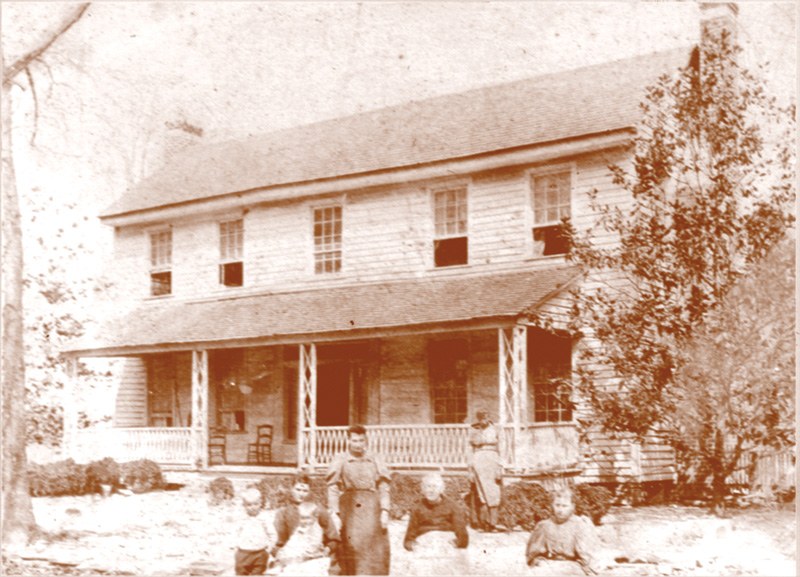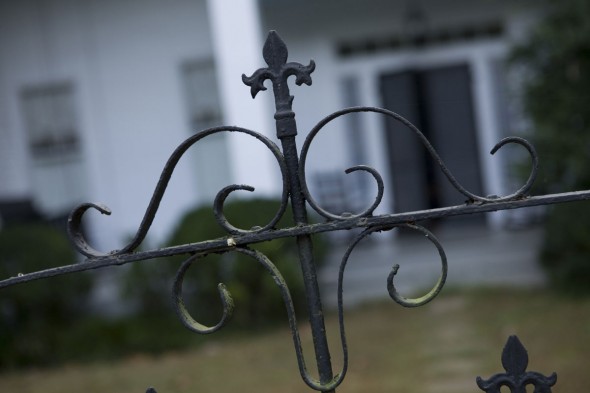
Constructed in 1866 by Joseph Robert Shields upon his return from service in the Confederate Army, the house retains many of its original features; however Ira Ethridge – ‘Mr. Ira’ – transformed its ‘plantation plain’ appearance in the early decades of the 20th century.
In 1914 he removed a single-storey shed porch from the front of the house and replaced it with the present two-storey porch giving the house a grander neoclassical façade enhanced by a cantilevered balcony above the front door.
In 1921 he enclosed the front yard with an iron fence obtained from the courthouse square in Rabun County, but into the 1940s it remained a swept yard dominated by two magnolias as old as the house. He also added several rooms to the rear of the house including a kitchen to replace the original detached log kitchen.
In Mr. Ira’s time, the yards at the back and sides of the house were primarily workplaces catering to the domestic needs of the main house. On the south side of the house beyond a servants’ house were a small hay barn, a vegetable garden and an orchard.
The orchard was about two acres in extent, but in earlier times there had been two acres of apple trees and an acre of peaches. Behind the house there were a number of structures related to the supply and storage of provisions, including a smokehouse and a chicken house, plus a well.
There was also a small chicken run, but Joyce Ethridge remembers chickens leaving the run and roosting in the magnolia trees in the front yard. Today the backyard is no longer a workplace; however the collection of outbuildings is fairly intact and the area is still shaded by ancient oaks and pecans.
 When it was a dirt road, Ethridge Road ran close beside the iron fence in front of the house, but when it was improved and paved in the 1950s it was moved further away. And on the north side of the house Carruth Road also ran close to the fence until it too was improved and realigned.
When it was a dirt road, Ethridge Road ran close beside the iron fence in front of the house, but when it was improved and paved in the 1950s it was moved further away. And on the north side of the house Carruth Road also ran close to the fence until it too was improved and realigned.
Today, the Chaisson Family, descendents of Joseph Robert Shields, lives in the house and carefully preserves its historic features.
NOTE: The house is not owned by the Shields-Ethridge Farm Foundation and is not open to the public.
